How to Choose the Propeller Shaft For Your Tohatsu Outboard
A propeller is arguably the most important and influential component of an outboard motor.propeller shaft for tohatsu outboard Its proper selection ensures that the engine operates within its recommended RPMs, improves fuel economy and performance, reduces wear, increases longevity, and enhances boat handling characteristics. Propellers are available in many different sizes, shapes and styles, which can be confusing. To help you choose the best propeller for your Tohatsu outboard, consider the following factors:
Propeller shaft length is important to consider when selecting a new propeller.propeller shaft for tohatsu outboard The shaft length is the distance from the inner top side of the mounting bracket to the horizontal anti-ventilation plate that's above the propeller. This measurement is typically used for short-shaft (S) models but can also be used for long-shaft (L) outboards. In general, a L-shaft propeller is slightly longer than a S-shaft.
Once you know your propeller shaft length, narrow down the options by choosing a style and size that matches your particular needs and usage.propeller shaft for tohatsu outboard For instance, if you regularly water ski, look for a high-pitch propeller with less slippage that will provide great hole-shot acceleration and low-speed pulling power. If you mostly cruise and troll, on the other hand, select a prop with more slippage and a greater diameter to reduce noise and vibration.
The type of blades is another important factor.propeller shaft for tohatsu outboard Four-blade propellers provide more bite and traction with the water, which can significantly improve acceleration and top speed. However, they can be noisy and may need to be serviced more often than three-blade propellers.
To test the propeller, find an open stretch of water and run your engine up to WOT. Observe the maximum engine RPM on your tachometer and compare it to the manufacturer's recommended RPM window. If your engine over-revs, the propeller's pitch is too low. Adding an inch of propeller pitch will lower WOT RPM by 150-200 RPM.
In addition to propeller size and shape, the rake angle (the angle at which the blades slant backward from the hub center) plays a role in engine performance. A higher rake angle increases time to plane and top-end speed, while a lower rake angle decreases time to plane and improves handling and control in tight corners.
Once you've tested the propellers you've narrowed down, make adjustments to engine height to optimize speed and maneuverability. Start by raising the engine one mounting hole at a time until you're happy with your performance, then lower the engine one hole down. Finally, keep a spare prop on board in case the first one becomes damaged. After installing the new prop, run the motor to settle the hub nut and check for wobble. Also, remember to change the cotter pin if needed. Propellers with pressed-in rubber hubs may need to be run twice to allow the lubricant to work its way through the bearings and set properly. Stainless steel hubs are more durable and offer better performance. For example, they're more resistant to corrosion and are less prone to warping and heat generation.
Tags:carburetor for tohatsu 4 stroke 15hp | propeller shaft for mercury outboard | mercury outboard propeller shafts
